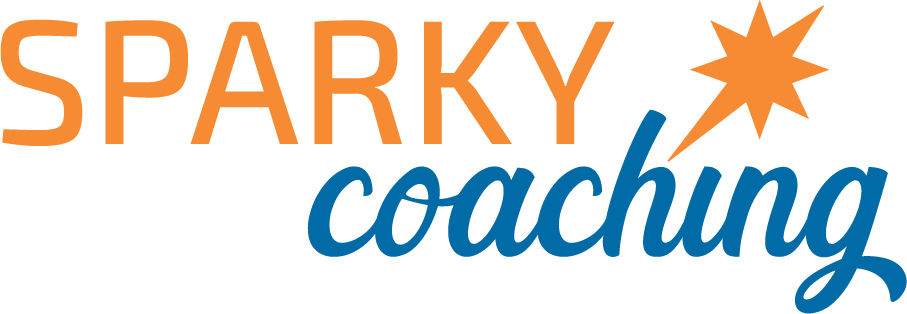
The Courage to be Creative (in coaching)…
Coaches love models. Most of the professional coach training we receive has a strong focus on being able to navigate and apply a model we’ve been taught, during each coaching conversation.
For me this was the Solution Focussed approach, but of course there are plenty of others.
We like using the models because they give us structure, direction and consistency. They help us build confidence in our coaching ability and develop our skill in a logical, practicable way.
But, if we stick to them religiously they can become predictable, stale and, well, boring.
Coaching models provide a solid framework, but they shouldn’t be restrictive.
The antidote is to bring some creativity to the plate to rejuvenate sessions and keep things fresh for both you and your client. Here’s some ideas to try:
- Customise: Tailor parts of the model to better fit the personality and unique circumstances of each client. For example, while using the GROW model, you might incorporate creative visualization when setting goals or use story-telling to explore different realities.
- Combine: Sometimes one model is not enough. Merging elements from various models can offer new perspectives and solutions. For instance, you might start with the structure of the GROW model but weave in the affirmations and scaling techniques from the OSKAR model as you move towards defining actions and reviewing progress.
- Tools and Activities: Mind maps, cards, or digital apps can offer a more interactive experience and help visualize problems and solutions differently, making the session more engaging and memorable.
- Focus on Client Creativity: Encourage clients to come up with solutions themselves. This could be through brainstorming sessions, creative exercises, or even role-playing scenarios. The idea is to make the client an active participant in crafting their own journey.
- Use your senses: Be curious about what you can see in the clients background. Listen to the type of language they use, surface this to them and encourage them to explore something different.
- Continual Learning: As a coach, keeping your practice fresh is crucial. Continually learning about new models, techniques, and theories not only adds to your toolkit but can also reinvigorate your approach to coaching. Attend workshops, seminars, and other training opportunities; stay curious about new developments in the coaching field.
Now, for some this is scary. It requires a certain confidence as you step away from a learnt model, and it isn’t risk free:
Risks:
- Unpredictability: Traditional coaching models offer a roadmap that can be predictably followed, which provides a sense of security for both the coach and the client. Introducing creative elements involves stepping into the unknown, where outcomes are less certain. This uncertainty can feel risky, especially in professional settings where results are closely monitored. It requires not only the courage to experiment but also the resilience to handle potential failures or less successful outcomes.
- Client Expectations: Clients often come into coaching with certain expectations about the process, particularly if they are familiar with traditional models. Deviating from these expectations by incorporating creative techniques might be met with resistance or skepticism. It takes courage to challenge these expectations and invite clients to engage in unconventional methods.
- Skills and Preparation: Integrating creativity effectively into coaching sessions often demands additional skills, such as a deeper understanding of psychological principles, familiarity with creative methodologies, or even proficiency in using new tools. Acquiring these skills and preparing to apply them confidently can be a significant challenge.
- Judgment from Peers: The coaching community, like any professional group, can have deeply entrenched beliefs about what constitutes “proper” coaching. Introducing creative, unconventional methods might expose a coach to judgment or criticism from peers who adhere strictly to traditional models. Standing by one’s innovative approach requires self-confidence and conviction in the face of potential professional scrutiny.
So, infusing creativity into coaching practices calls for courage because it involves embracing uncertainty, challenging norms, expanding one’s skill set, and potentially facing critique—all while maintaining a steadfast focus on the client’s welfare and outcomes. But, it can also weald incredible results…
Benefits:
- Enhanced Engagement: Clients are more likely to be engaged and motivated when sessions are dynamic and innovative.
- Improved Outcomes: Creative approaches can lead to breakthroughs in sessions that might not be achievable through a more standardized approach.
- Increased Flexibility: Being able to adapt and blend different models and techniques makes you a more versatile and effective coach.
- Personalized Coaching Experience: Clients appreciate a coaching experience that considers their individuality, which can enhance satisfaction and results.
We believe that while the use of coaching models is essential for structure and efficacy, it’s the creative application of these models that truly enhances the coaching experience. As coaches, cultivating our creativity is just as important as mastering the models themselves. Remember, the ultimate goal of coaching is to facilitate personal growth and transformation, and sometimes, a little creativity is just what’s needed to spark that change.
This takes some courage, but I invite you to try it out. To experiment with fresh ideas. To take a playful stance with clients from time to time.
Partnering with your client is always the priority, so be mindful to check the impact when you try to provoke creativity in a coaching conversation. They may love it, but they might not. Only continue if it is serving them, not you.
Let us know how you get on!
